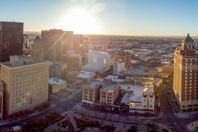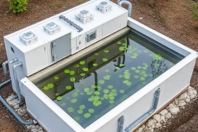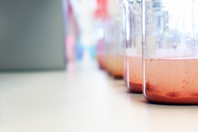WASTEWATER CONTAMINANT REMOVAL RESOURCES
-
Large wastewater facilities are designed to remove physical, chemical, and biological contaminants from domestic wastewater or industrial effluent, producing treated water that is safe to discharge into rivers. But they’re expensive and energy-intensive. They’re also difficult to maintain in rural areas where local government doesn’t get much revenue.
-
Silica can secretly wreak havoc in many industrial applications. Addressing this invisible issue can save your equipment. It will also optimize maintenance while mitigating costly downtime from scale deposit buildup.
-
This article explores what ecological wastewater treatment is, how it works, its benefits over conventional systems, real-world applications, and its potential to lead us toward a more sustainable and water-secure future.
-
Water is one of the most essential resources in any industrial setup, and managing it efficiently can mean the difference between success and stagnation. Welcome to the world of industrial water services — a sector that's as critical as it is complex.
-
The city of El Paso, TX, has always known that water is precious. After its public utility, El Paso Water, previously piloted a direct potable reuse (DPR) plant to turn agricultural irrigation wastewater into drinking water, the city is now ready to begin construction of a full-scale, 10-MGD DPR facility.
-
From modifying existing equipment to tailoring batch and fully automated systems, working with an experienced provider can help to assure integration and compliance with surprisingly fast ROI.
-
Finding the right wastewater treatment solution can be tricky, especially for smaller operations. Modular small-scale wastewater treatment systems offer practical solutions for various settings, from hotels and resorts to real estate developments and remote communities. How do you pick the right system? Let's explore these systems and their importance.
-
The U.S. PFAS water and wastewater treatment equipment market is expected to grow at over 11% from 2024 to 2031, primarily driven by stringent regulatory requirements and enhanced public awareness of PFAS contamination risks. The market was estimated at over $90 million in 2024.
-
The appropriate selection of polymer and a make-down system improves the water clarification process and significantly reduces costs.
-
Centralized wastewater treatment is sometimes not an option — and sometimes simply not the best choice, considering the expanding capabilities of decentralized systems.











